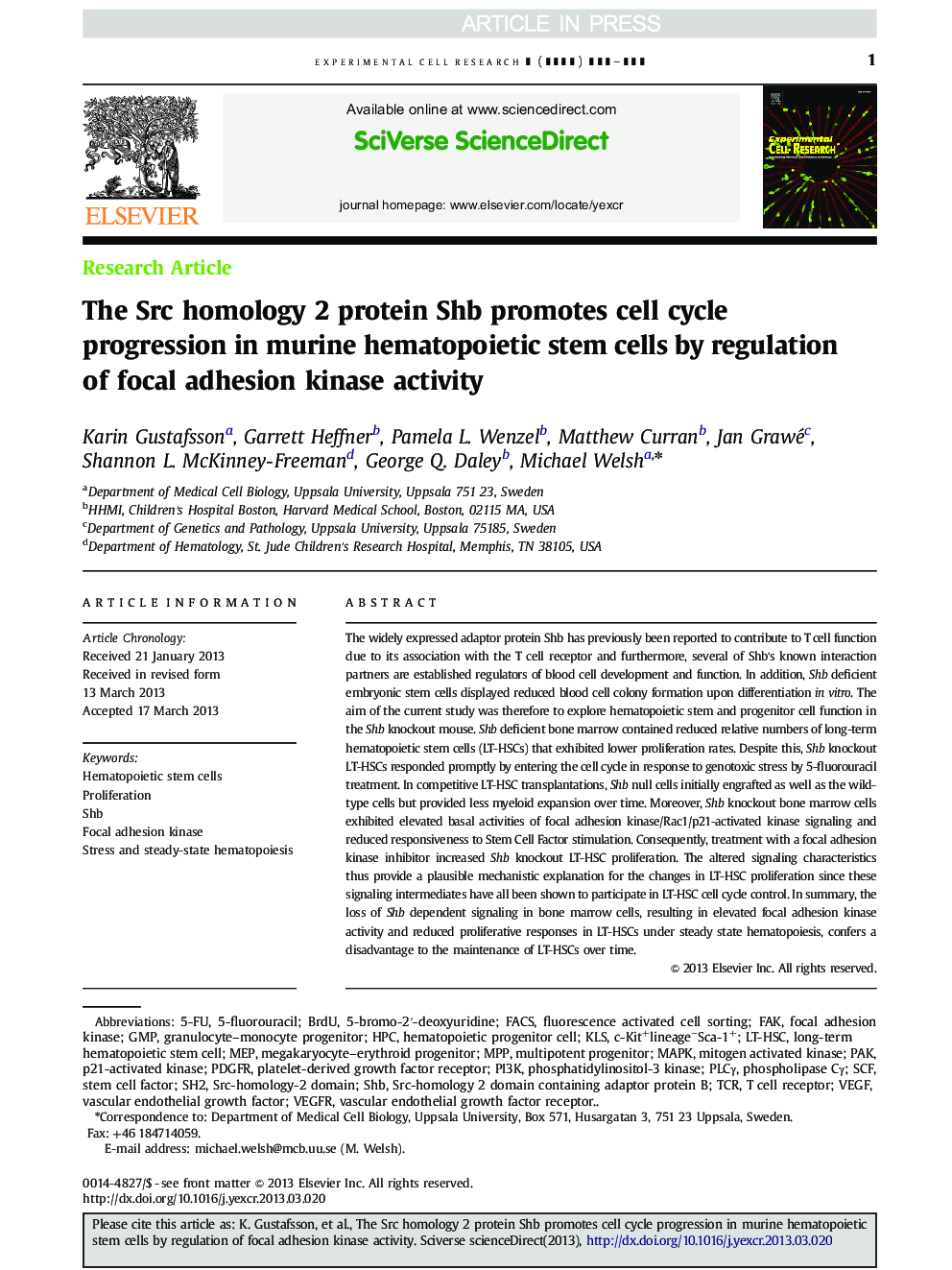| Article ID | Journal | Published Year | Pages | File Type |
|---|---|---|---|---|
| 10904256 | Experimental Cell Research | 2013 | 13 Pages |
Abstract
The widely expressed adaptor protein Shb has previously been reported to contribute to T cell function due to its association with the T cell receptor and furthermore, several of Shb's known interaction partners are established regulators of blood cell development and function. In addition, Shb deficient embryonic stem cells displayed reduced blood cell colony formation upon differentiation in vitro. The aim of the current study was therefore to explore hematopoietic stem and progenitor cell function in the Shb knockout mouse. Shb deficient bone marrow contained reduced relative numbers of long-term hematopoietic stem cells (LT-HSCs) that exhibited lower proliferation rates. Despite this, Shb knockout LT-HSCs responded promptly by entering the cell cycle in response to genotoxic stress by 5-fluorouracil treatment. In competitive LT-HSC transplantations, Shb null cells initially engrafted as well as the wild-type cells but provided less myeloid expansion over time. Moreover, Shb knockout bone marrow cells exhibited elevated basal activities of focal adhesion kinase/Rac1/p21-activated kinase signaling and reduced responsiveness to Stem Cell Factor stimulation. Consequently, treatment with a focal adhesion kinase inhibitor increased Shb knockout LT-HSC proliferation. The altered signaling characteristics thus provide a plausible mechanistic explanation for the changes in LT-HSC proliferation since these signaling intermediates have all been shown to participate in LT-HSC cell cycle control. In summary, the loss of Shb dependent signaling in bone marrow cells, resulting in elevated focal adhesion kinase activity and reduced proliferative responses in LT-HSCs under steady state hematopoiesis, confers a disadvantage to the maintenance of LT-HSCs over time.
Keywords
MPPPAKSCFVEGFRPLCγGMPFAKMEPTCrPDGFRHPCSH2LT-HSCKLSMultipotent progenitorFACSPI3K5-FU5-bromo-2′-deoxyuridineMAPKShbBrdUProliferationhematopoietic stem cellsHematopoietic progenitor cellVascular endothelial growth factorVascular Endothelial Growth Factor (VEGF)Stem Cell Factorphosphatidylinositol-3 kinasephospholipase Cγfluorescence activated cell sorting5-fluorouracilmitogen activated kinasep21-activated kinasefocal adhesion kinaseT cell receptorplatelet-derived growth factor receptorvascular endothelial growth factor receptor
Related Topics
Life Sciences
Biochemistry, Genetics and Molecular Biology
Cancer Research
Authors
Karin Gustafsson, Garrett Heffner, Pamela L. Wenzel, Matthew Curran, Jan Grawé, Shannon L. McKinney-Freeman, George Q. Daley, Michael Welsh,
